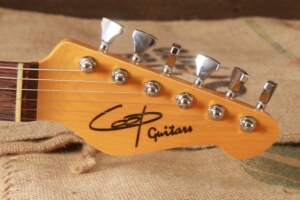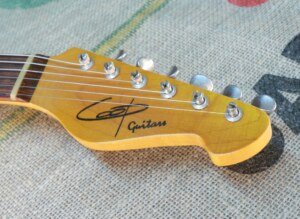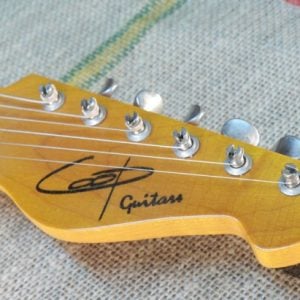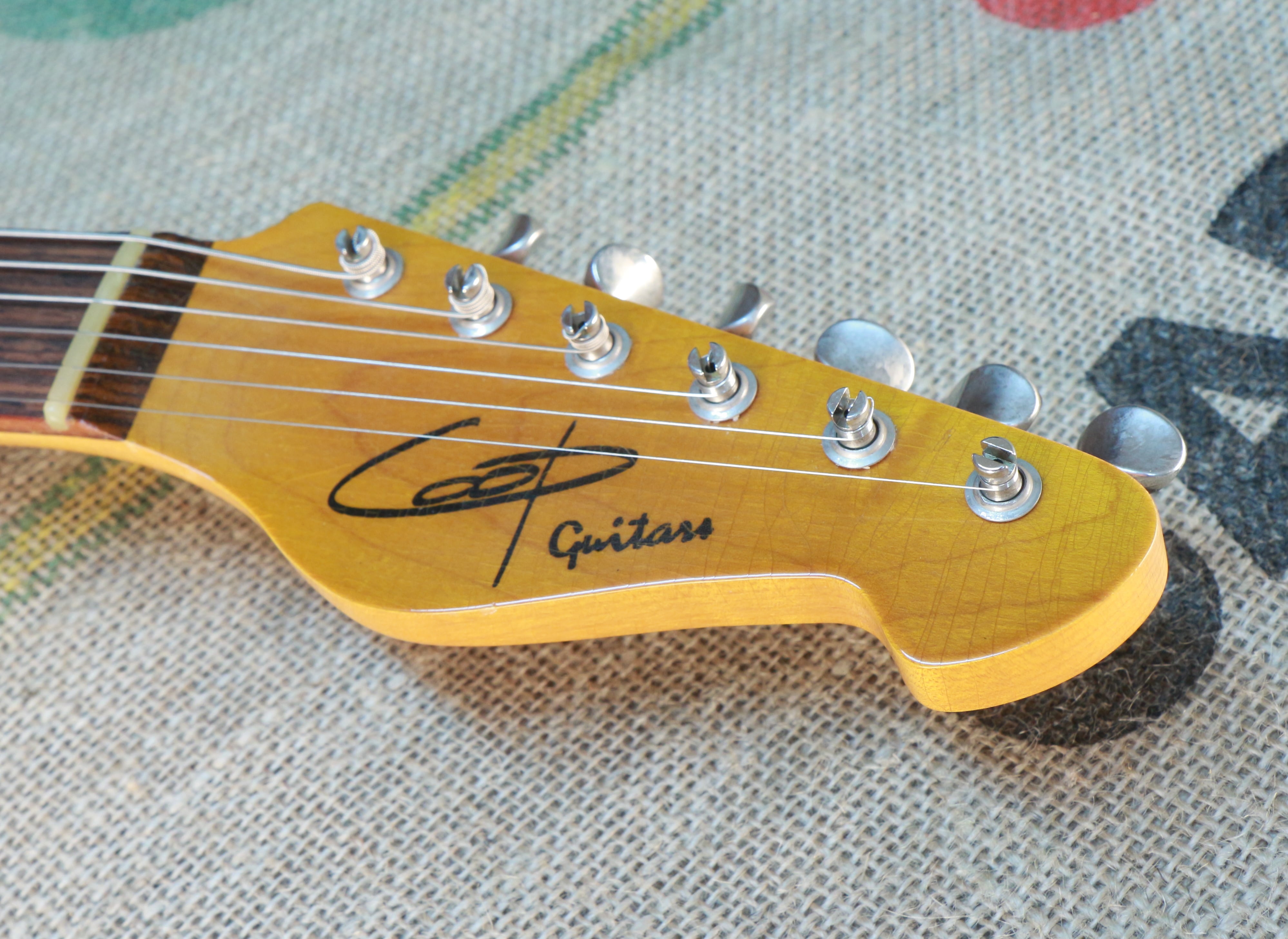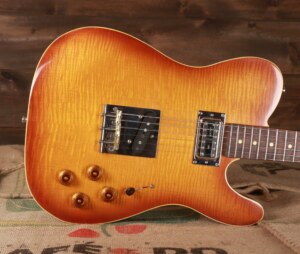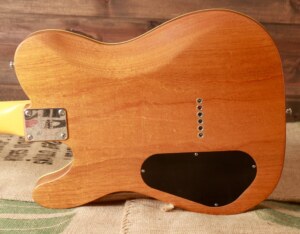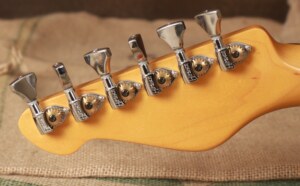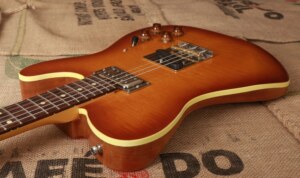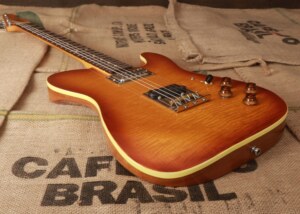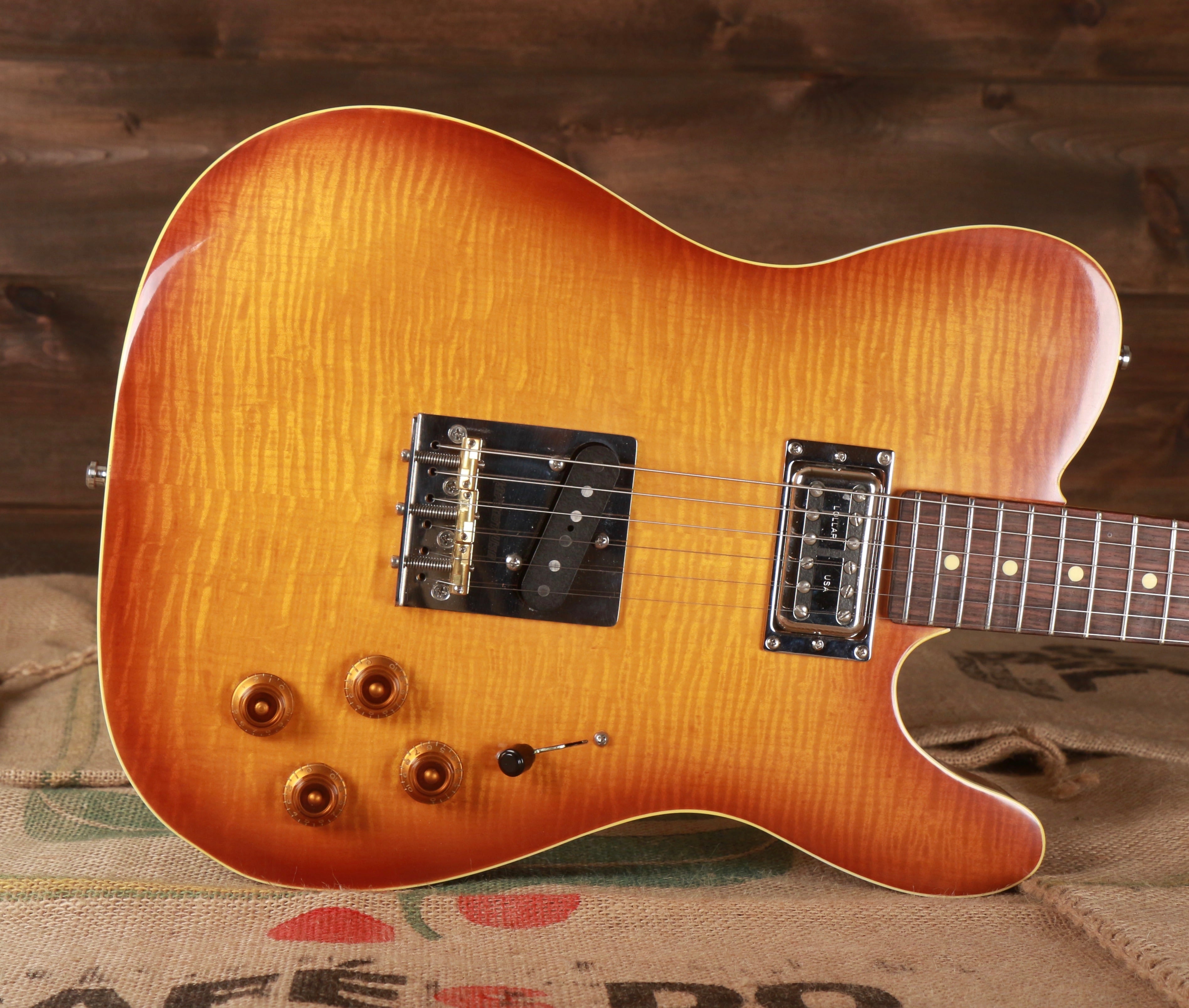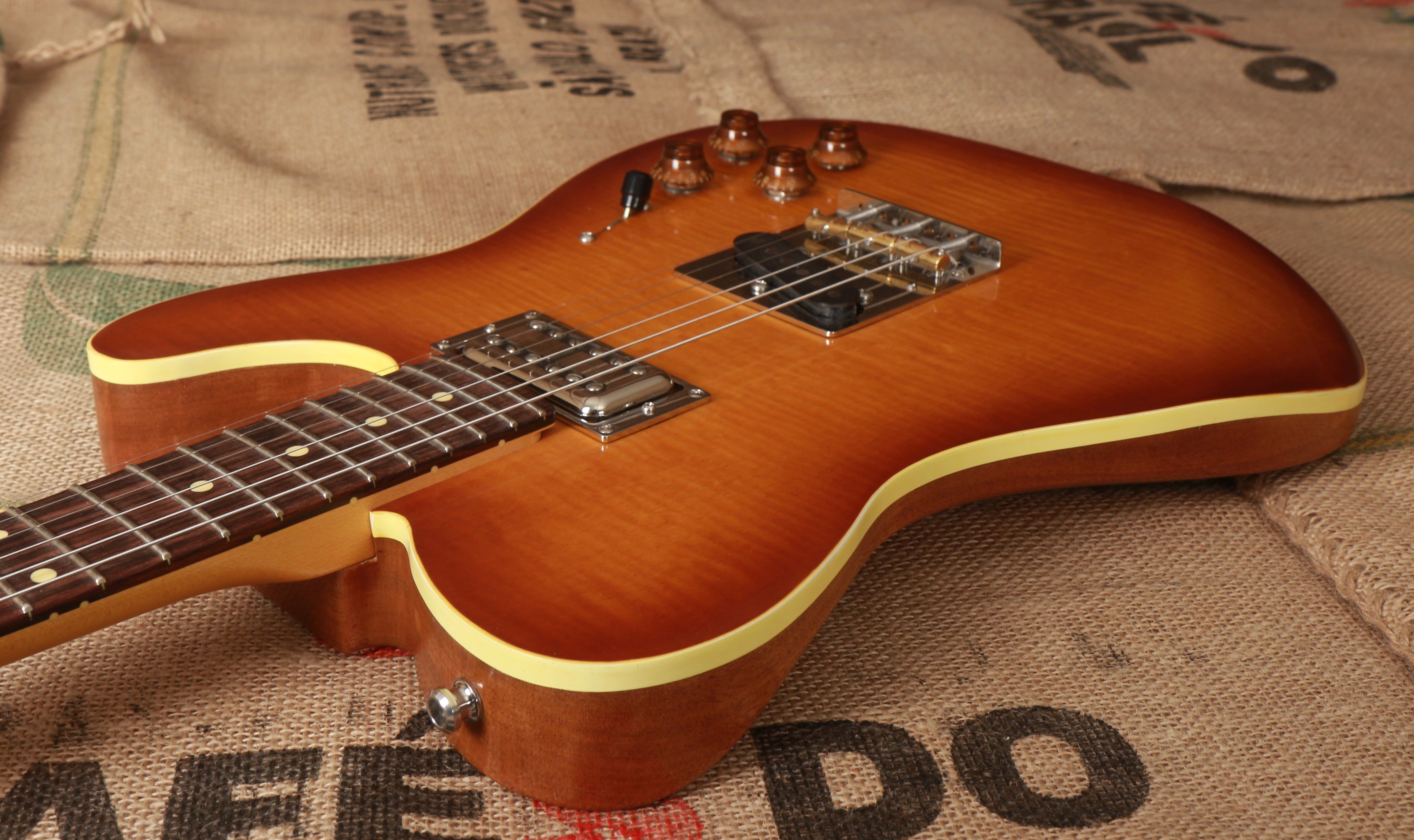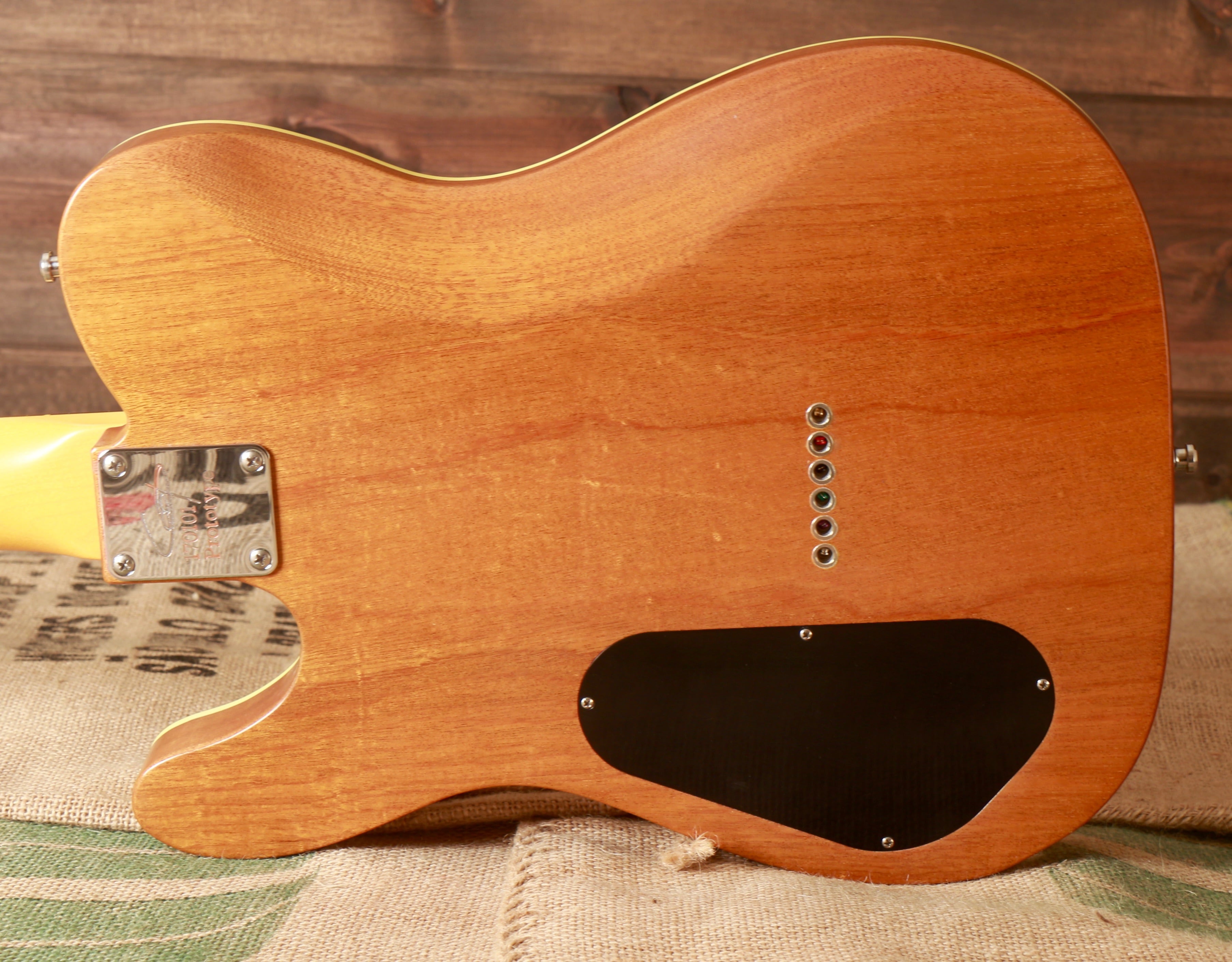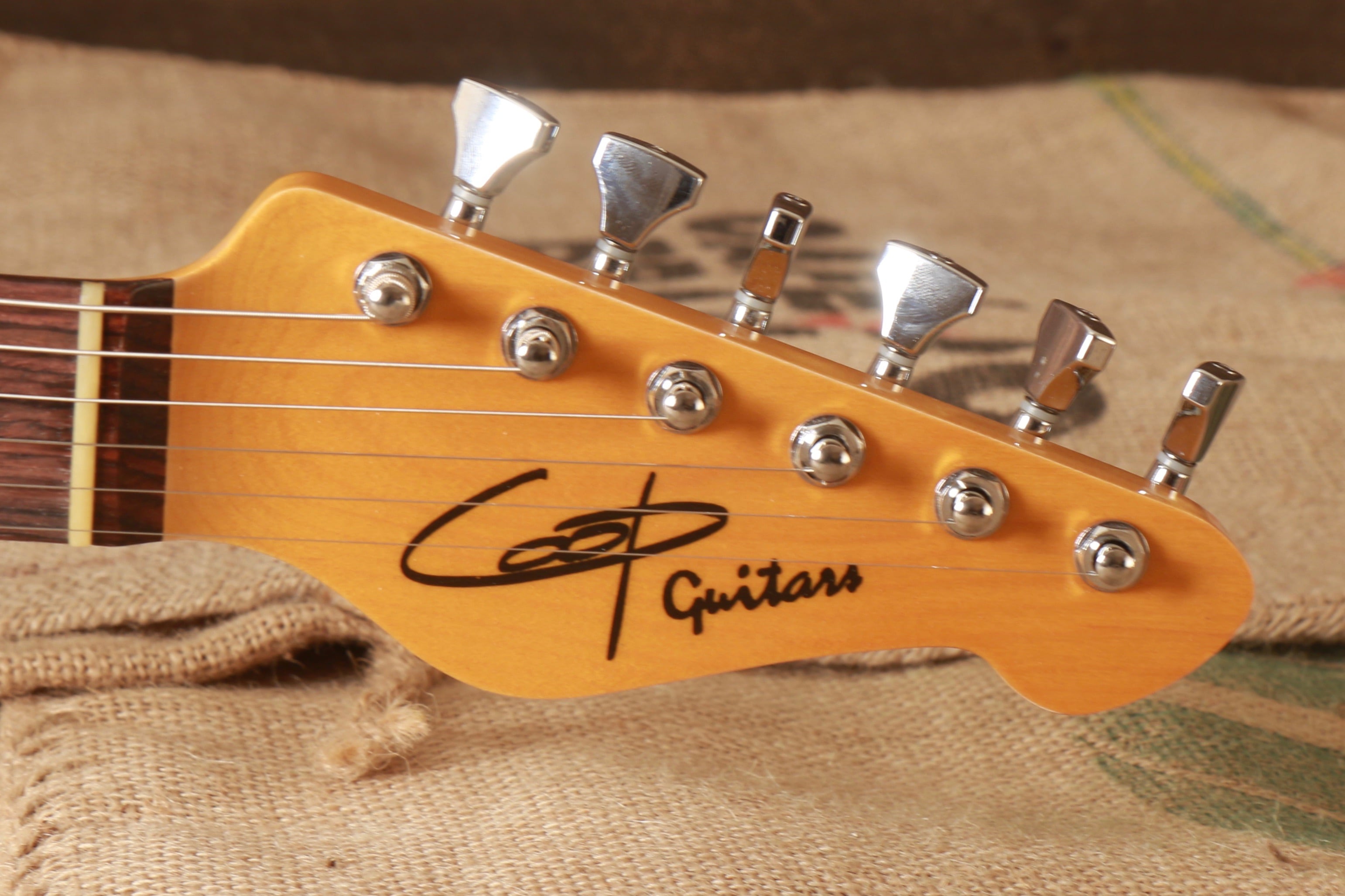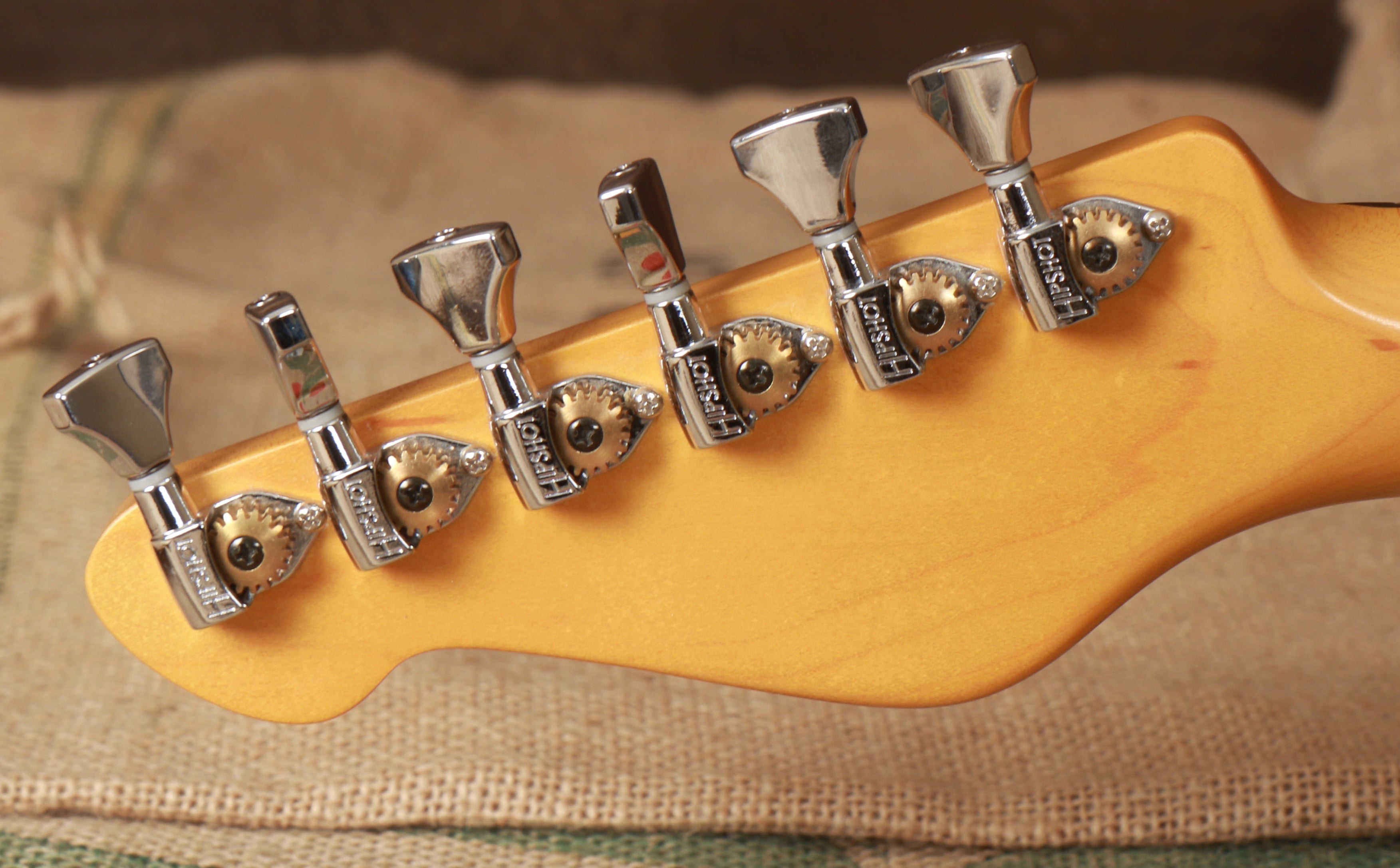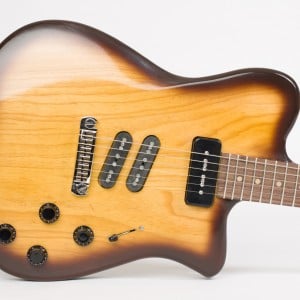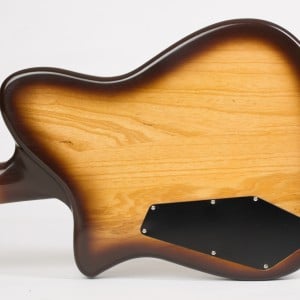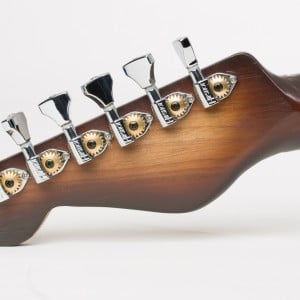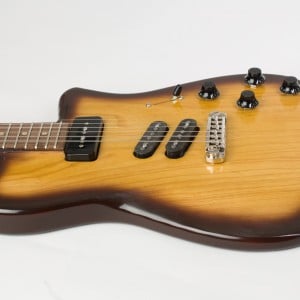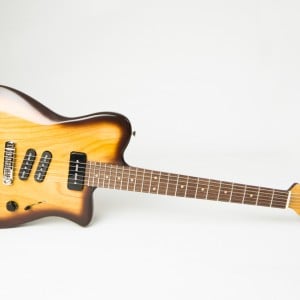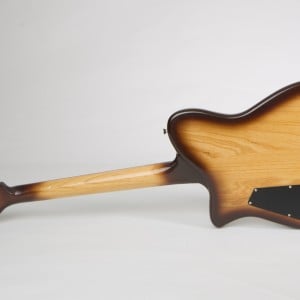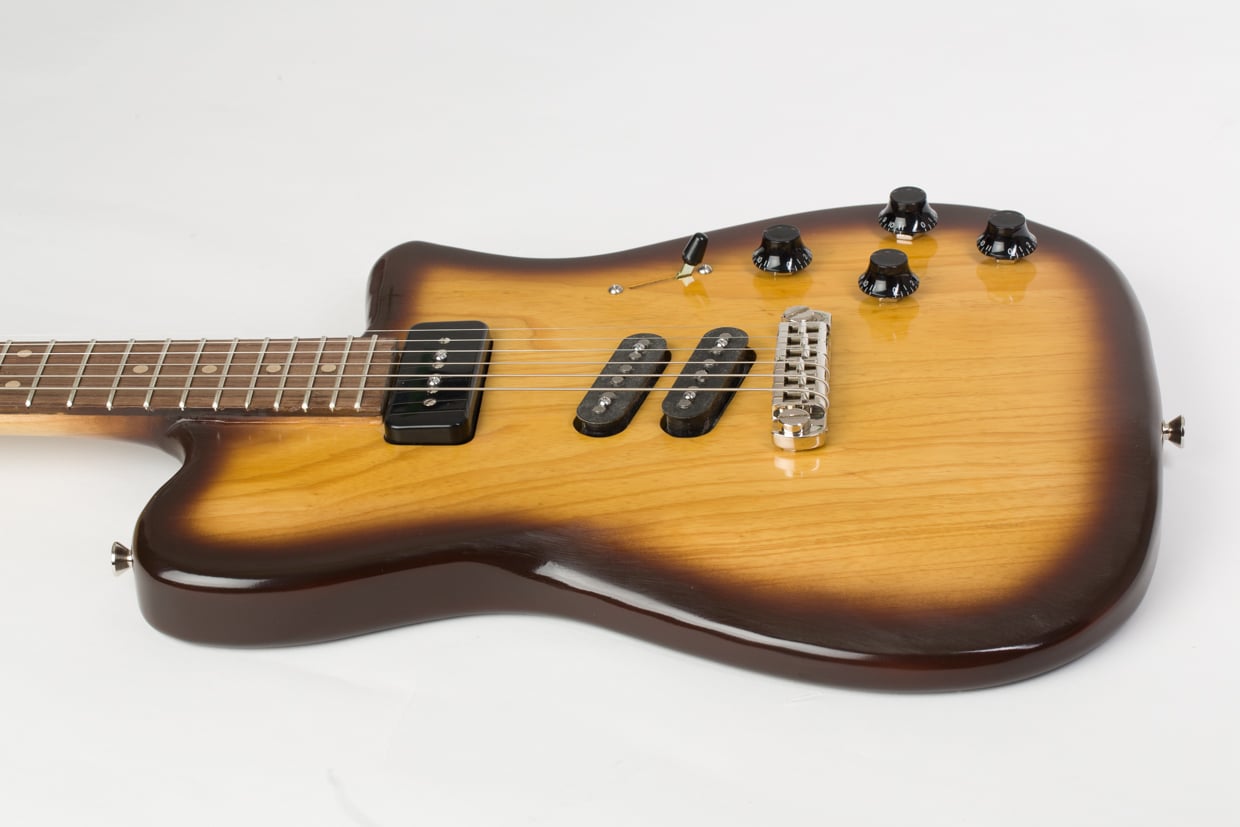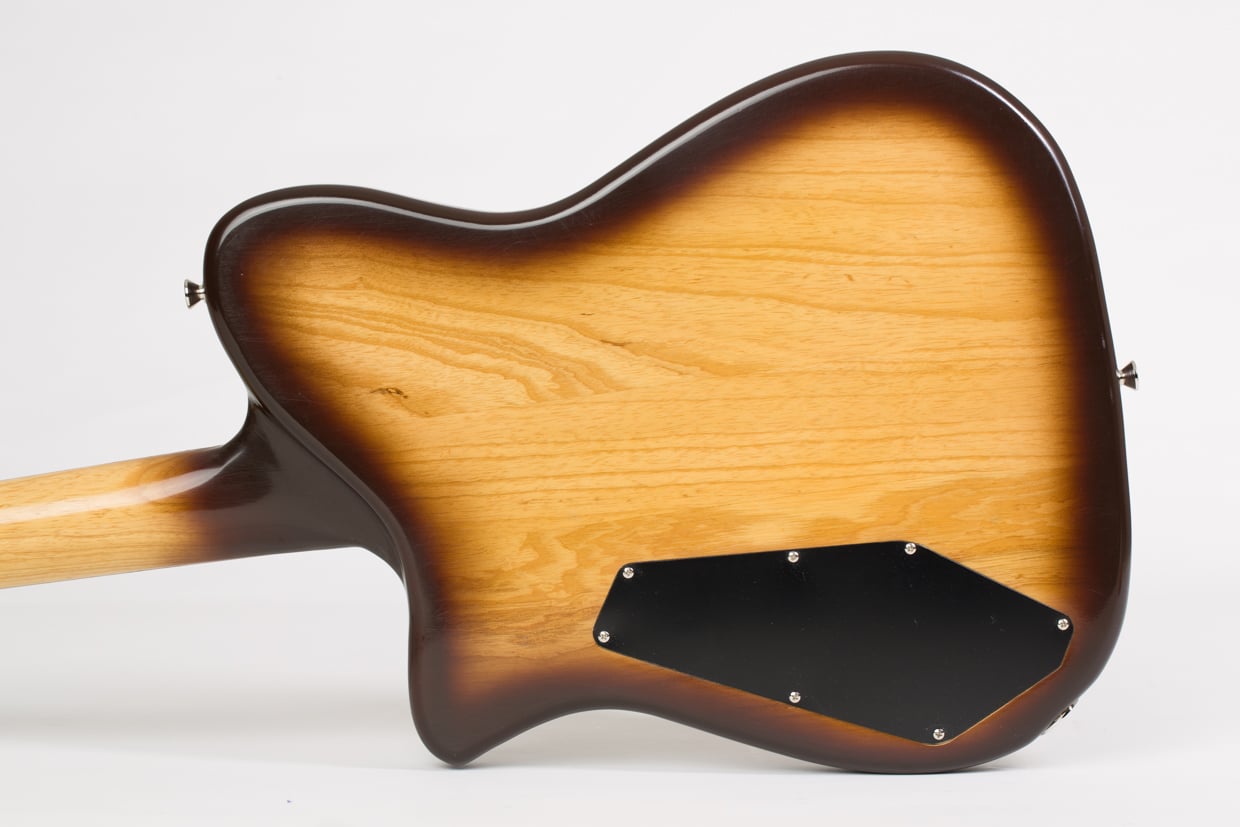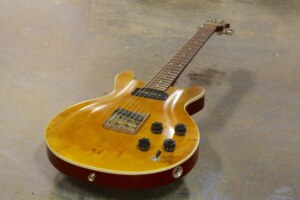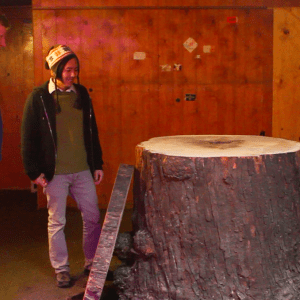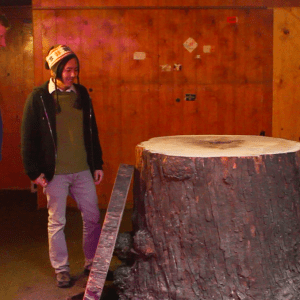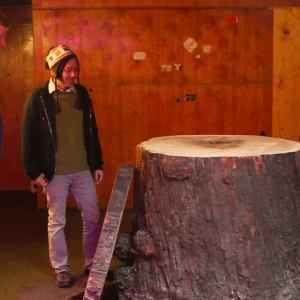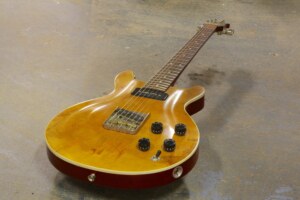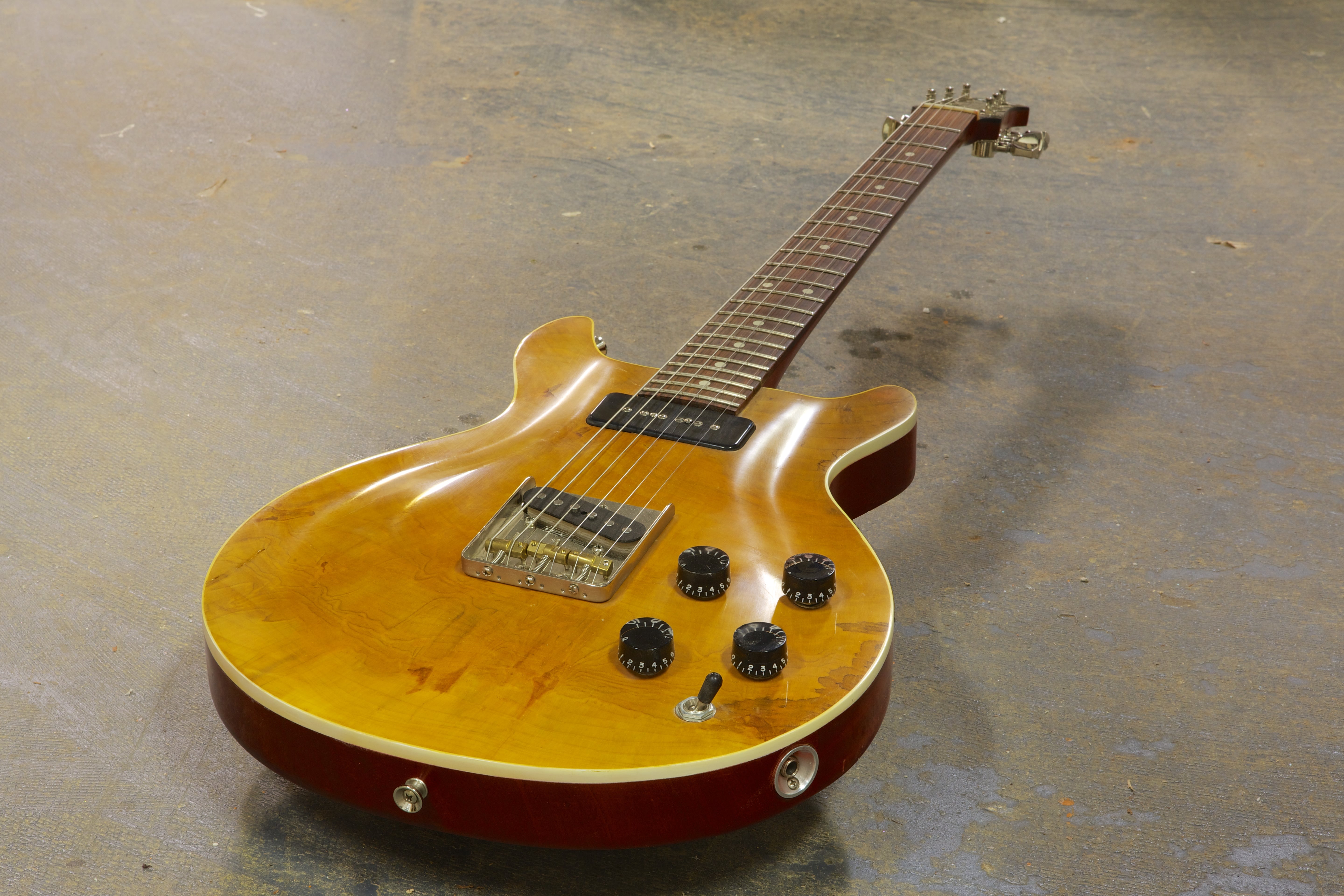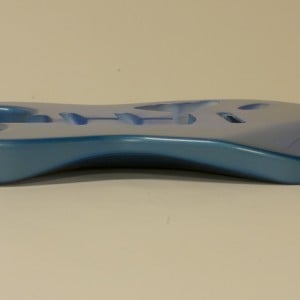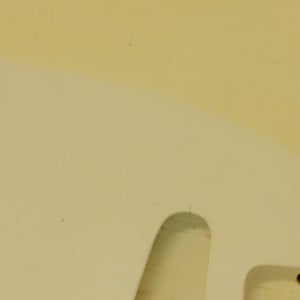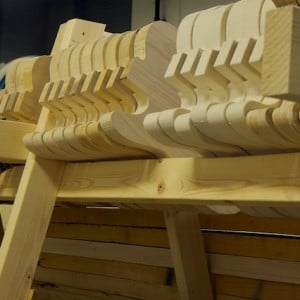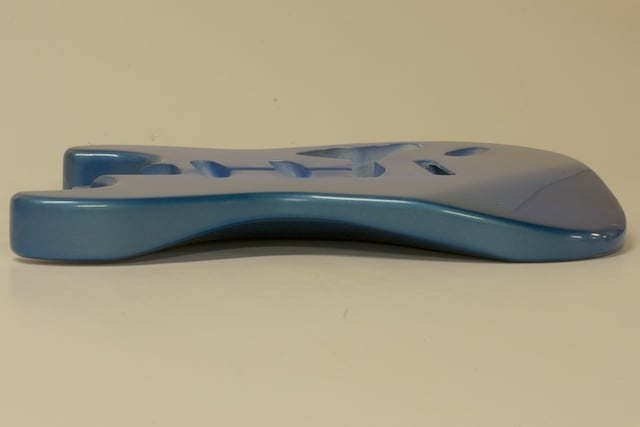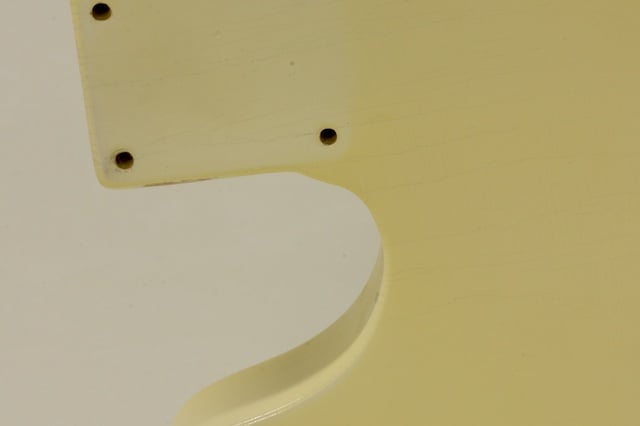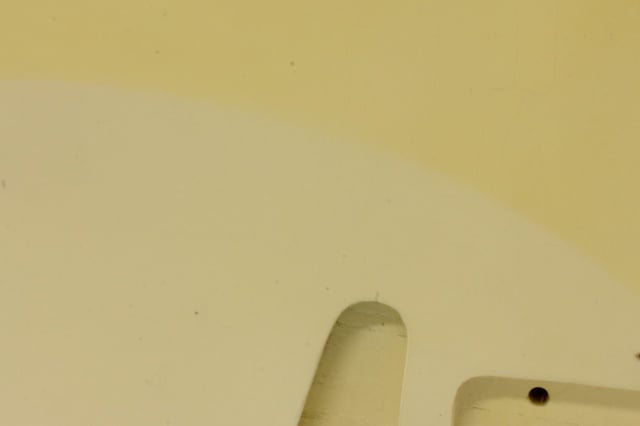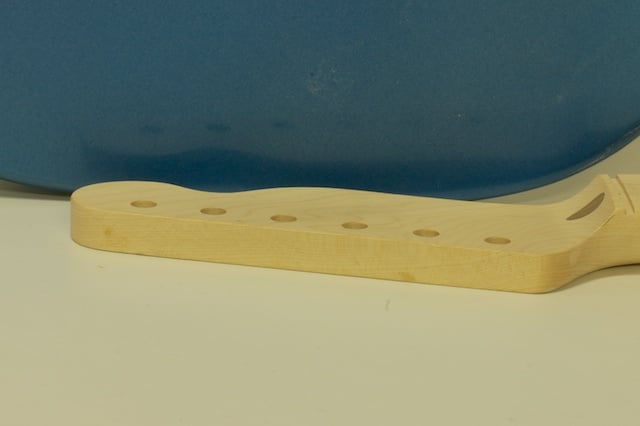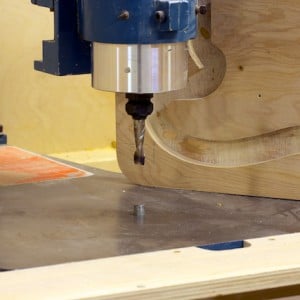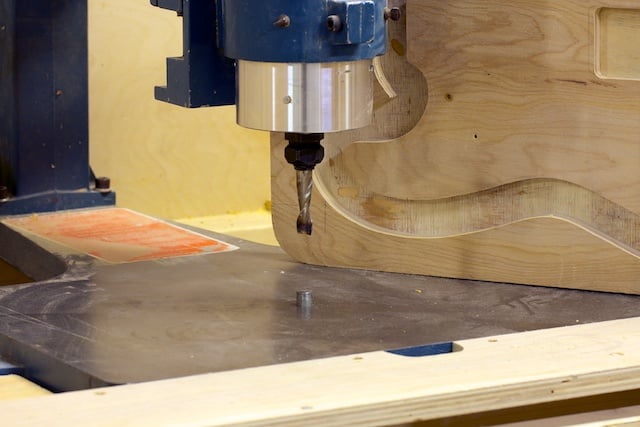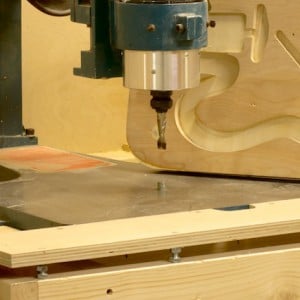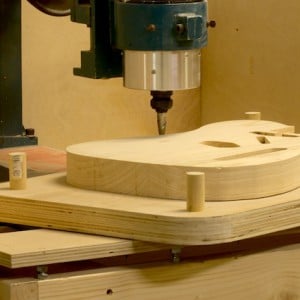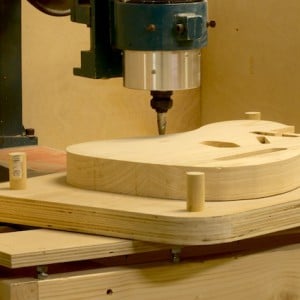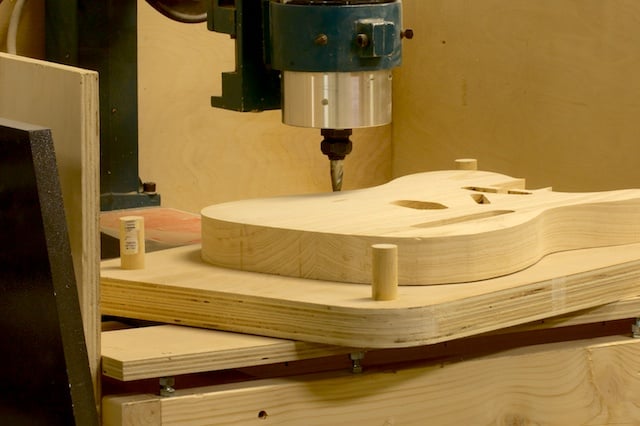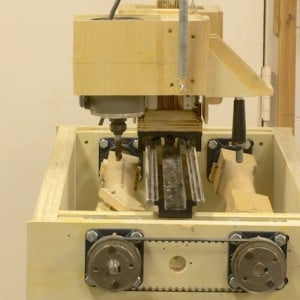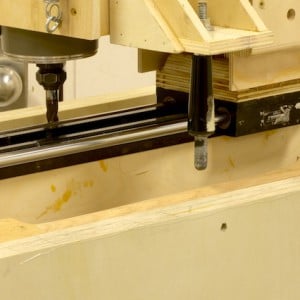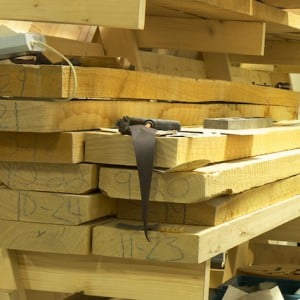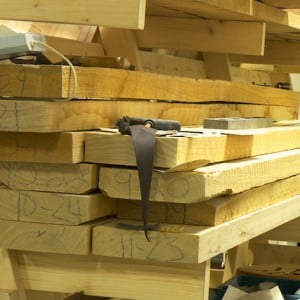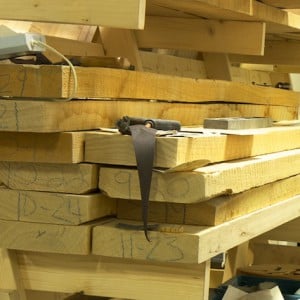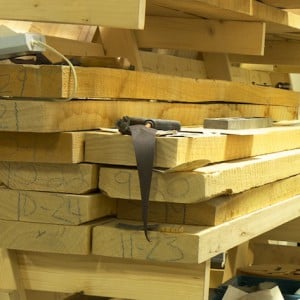Introducing the new Coop Rescue – T line of guitars.
Rescue T’s are the first models we’ve built with the Rescued Wood we mentioned in another post. These Rescue T-style guitars are built in quantities of twelve with the gnarliest knotty-pine we can find in each load of lumber we process. The hardness of pine varies greatly across its surface so we take advantage of that fact and enhance the grain by abrading the soft part of the grain to reveal a deep relief that resembles 100 year old barn siding.
Although this line of guitars was developed with a specific group of woods, hardware and electronics in mind, the idea was that no two should look alike. Obviously the grain of each piece of wood is different, but not even exact colors will be repeated. In the first batch of Rescue Ts we started with a large batch (enough to paint 12 guitars) of light blue metallic finish. The first guitar in this series was painted with this initial light blue metallic paint. Before painting each consecutive guitar in the series, we modified the remaining paint to ensure a wide range of blues.
Don’t let the rustic look of these guitars fool you, they play incredibly smoothly and have a very wide sonic range. Comments from players who have had a chance to try these guitars have been very similar. They’ve said things like “these feel totally modern in terms of playability but immediately comfortable and familiar as well”.
Features shared by all Rescue Ts are:
One piece rock Maple neck
22 Highly polished medium-jumbo frets
9.5″ fretboard radius
4 bolt neck with threaded inserts for a solid connection and feel
Staggered Gotoh tuners
Precisely shaped bone nut
Rescued Wood Knotty Pine body
Aged bridge (standard T-style string through body) with either threaded steel or brass saddles
Aged knurled knobs
Aged Polished Aluminum pick-guard
Rumpelstiltskin White Rope pickups
4 way Switchcraft switch
250 kohm solid shaft pots
.049 Orange Drop tone capacitor
Volume circuit to prevent loss of highs when volume is rolled off
Aged Electro-Socket jack cup
Gator Transit gig-bag w/ custom Coop Guitars logo
Please enjoy some pics of the prototype Rescue T that started it all.
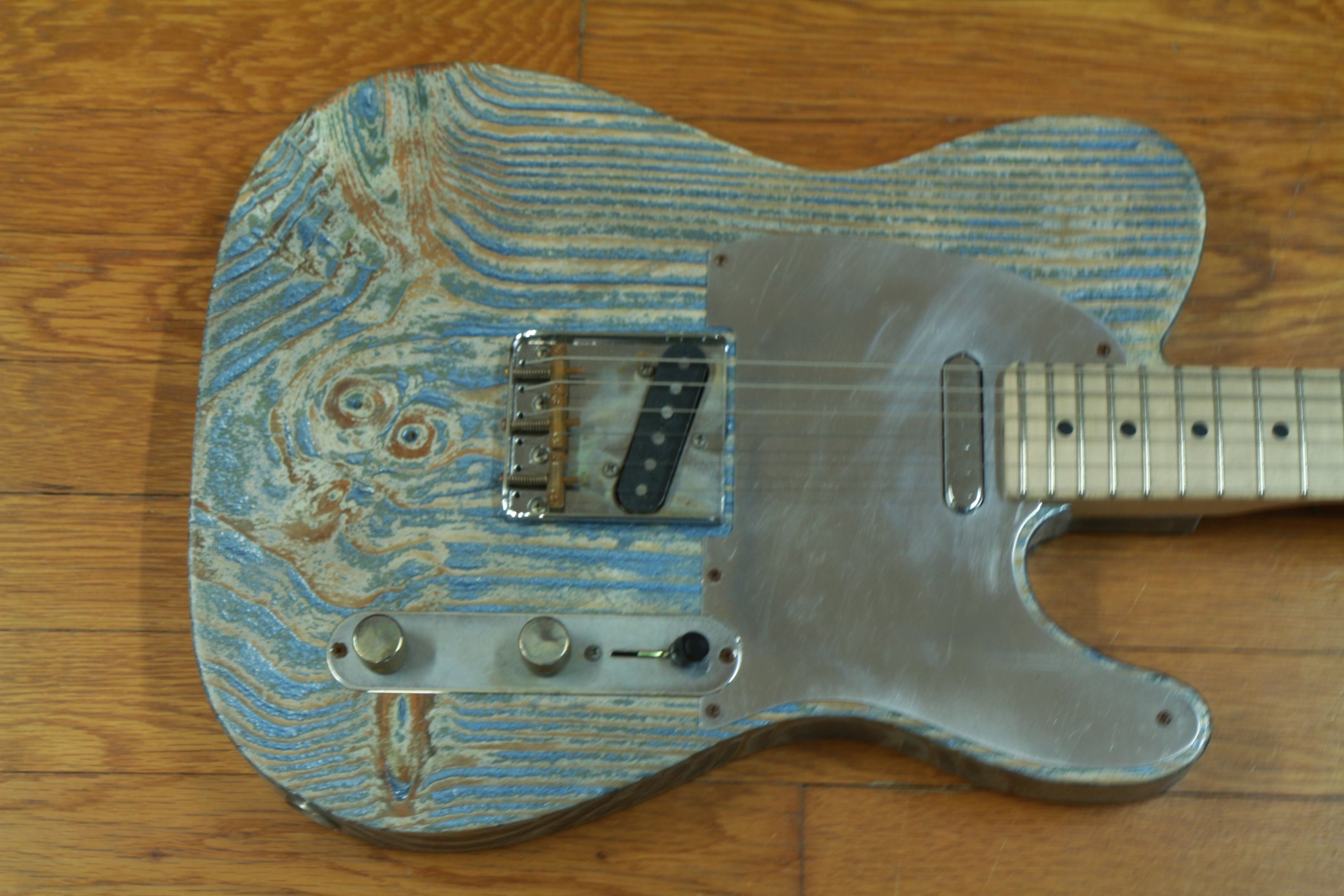
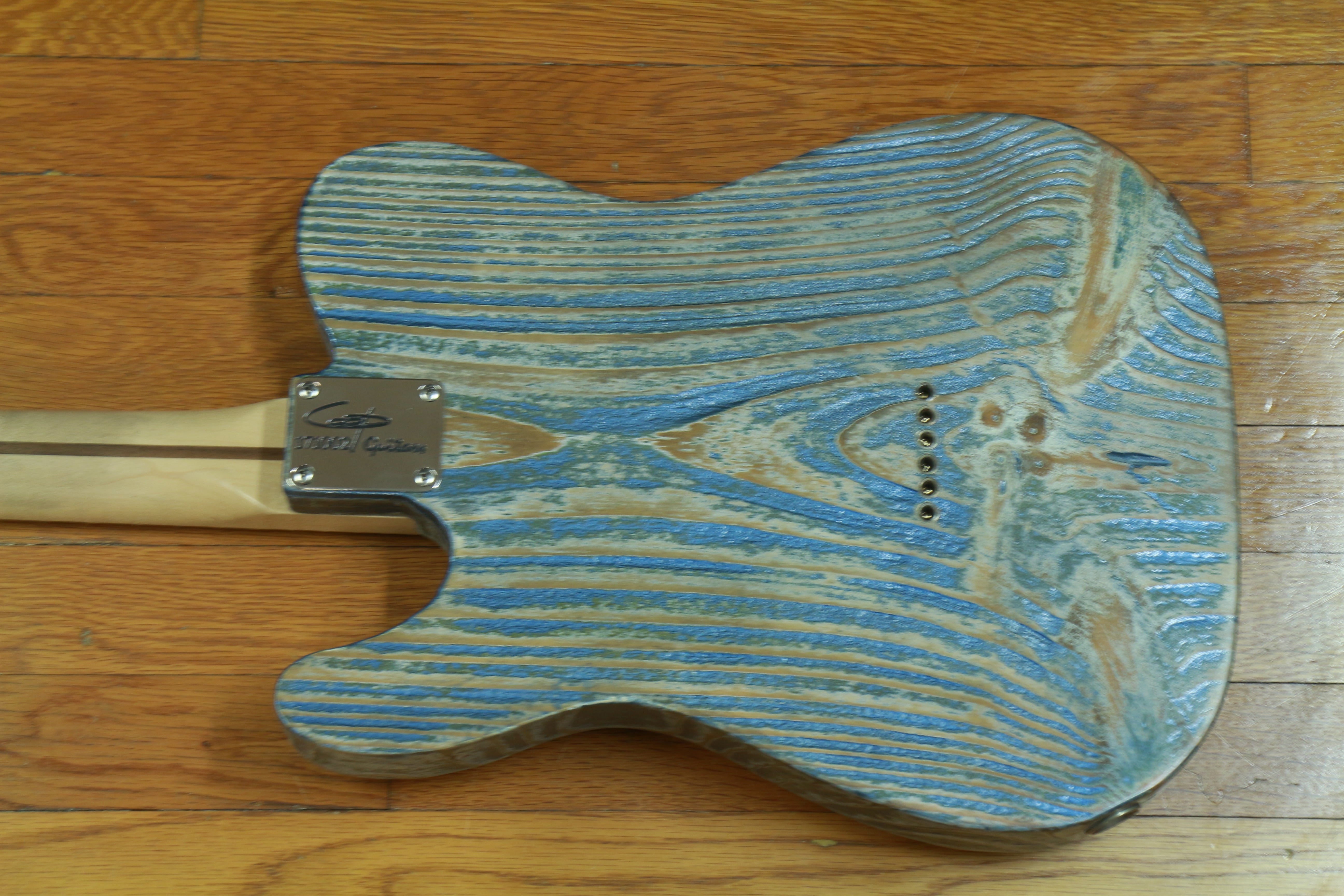
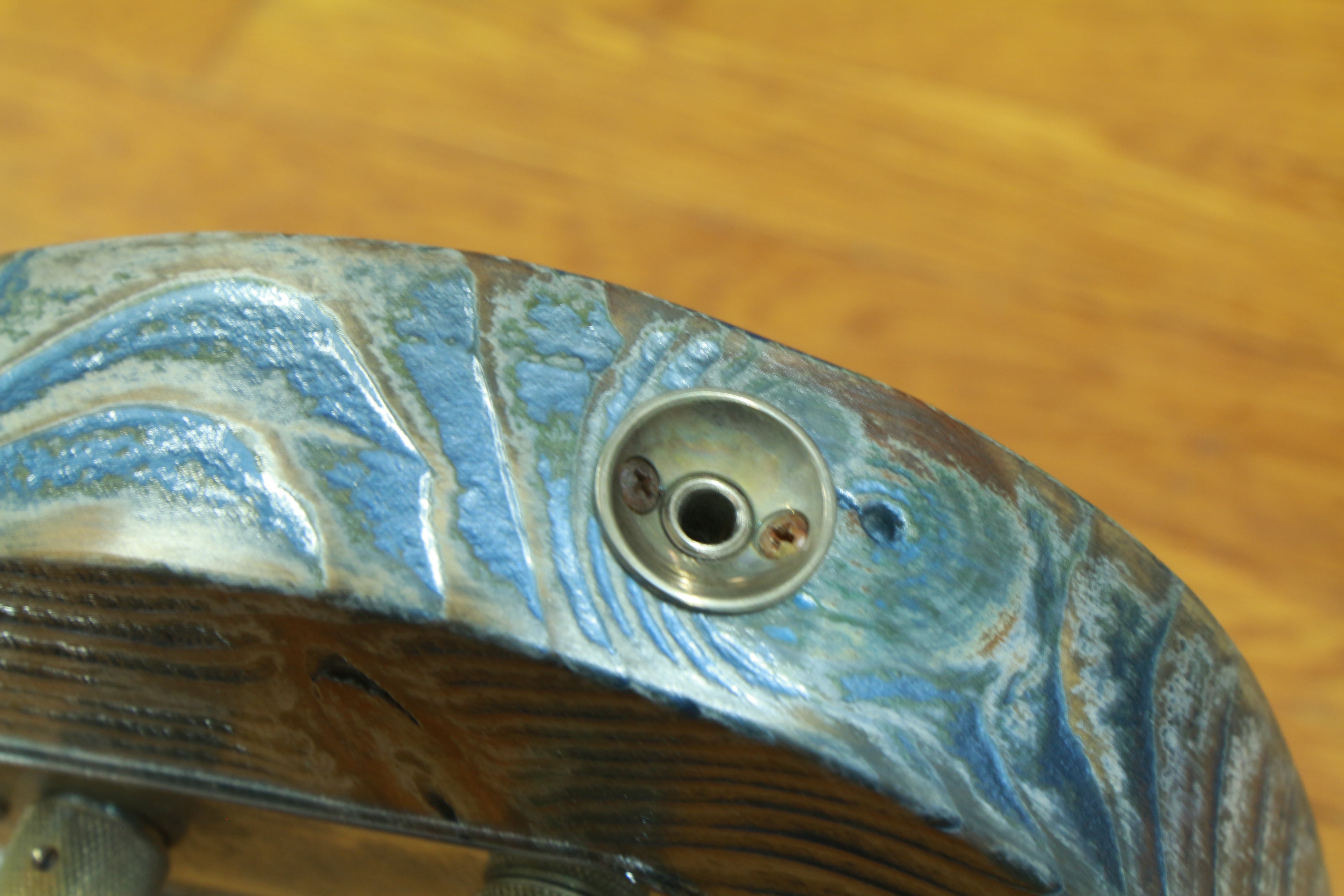
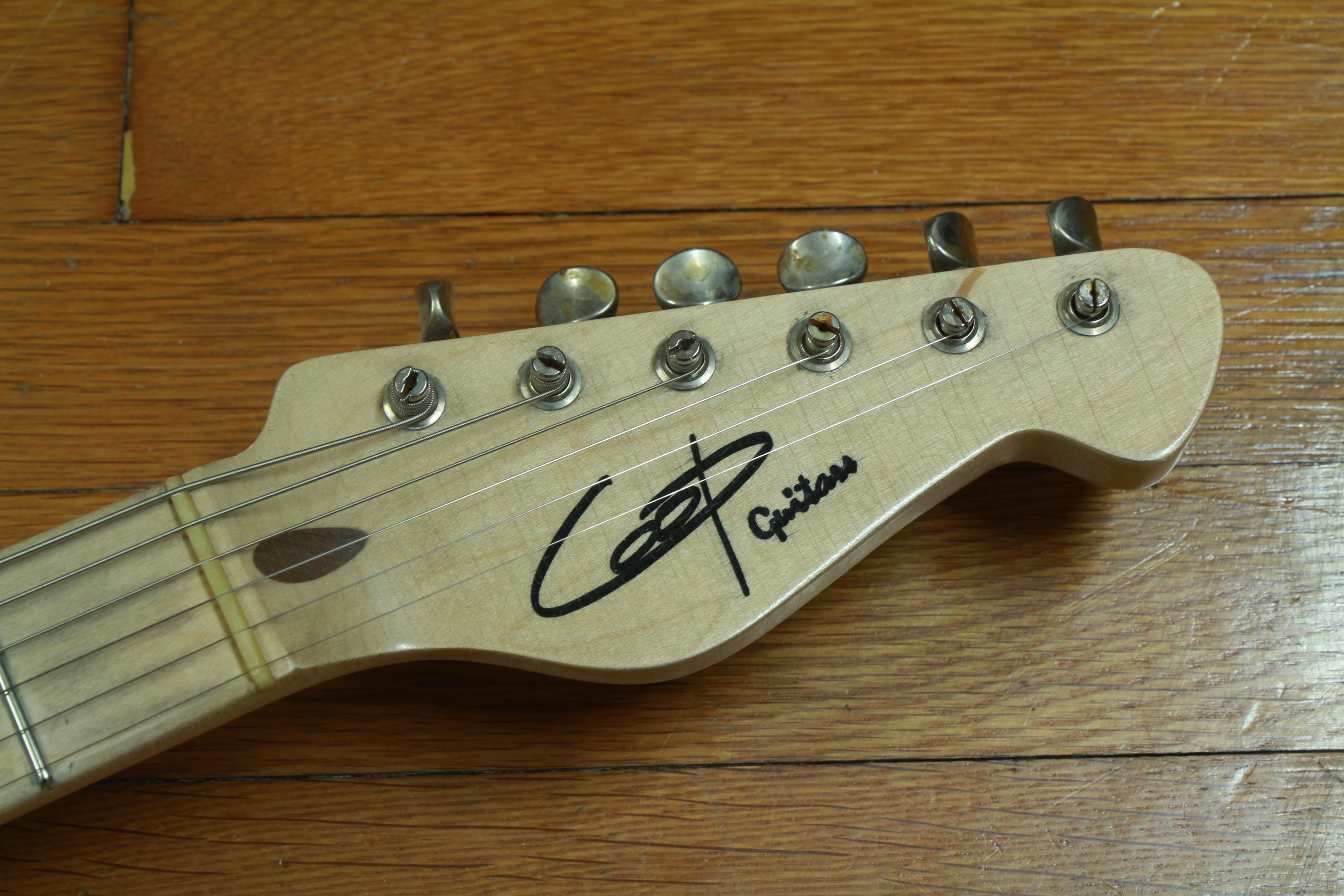

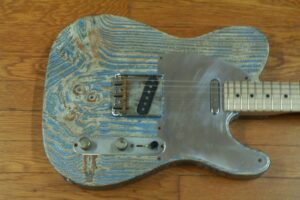
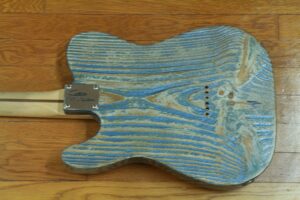
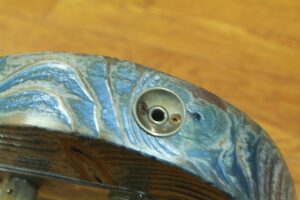
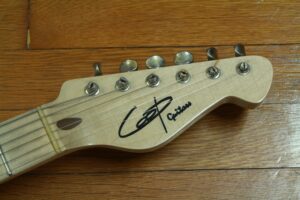
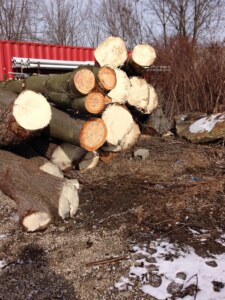
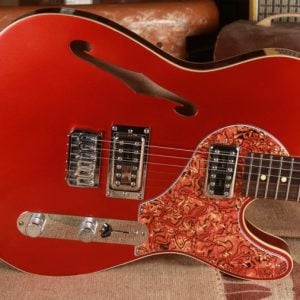
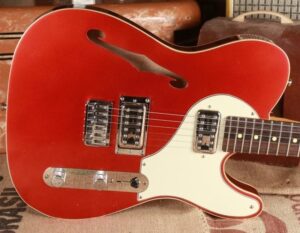
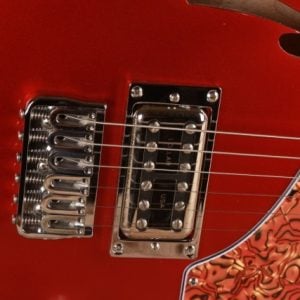
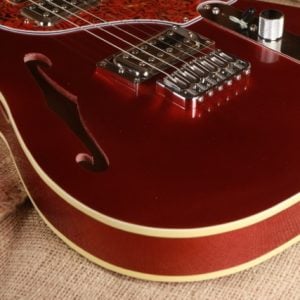
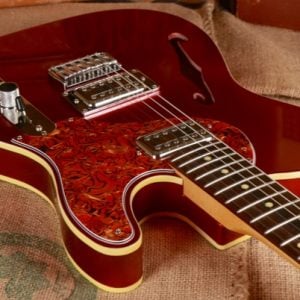
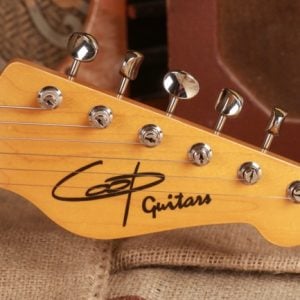
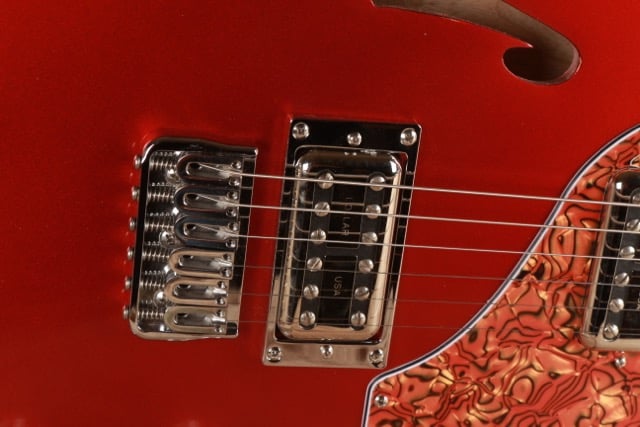
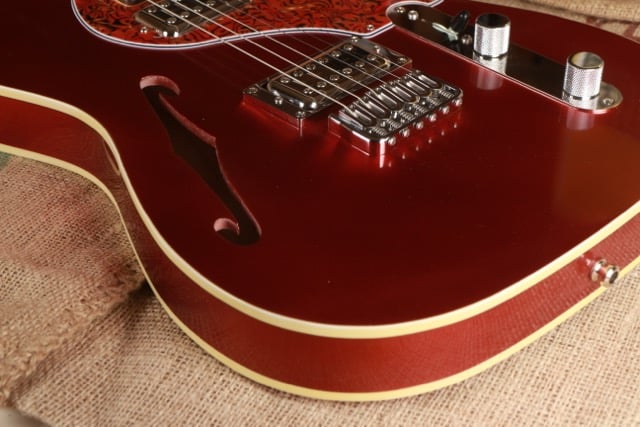
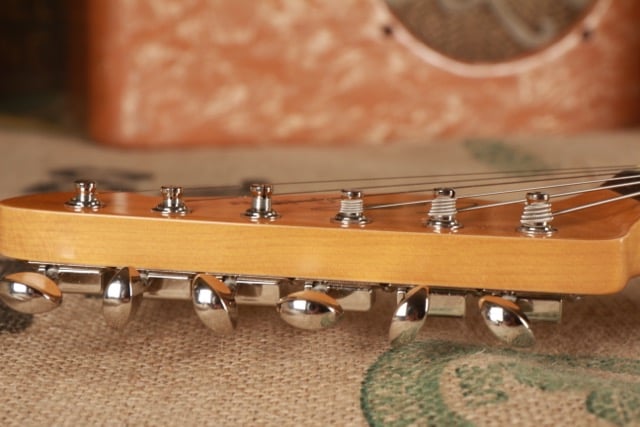
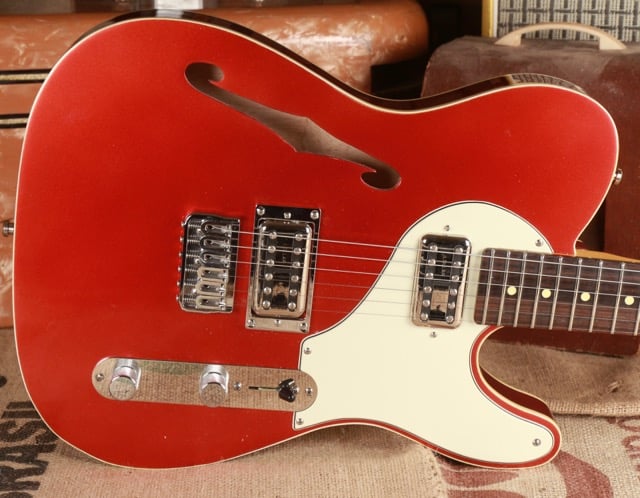
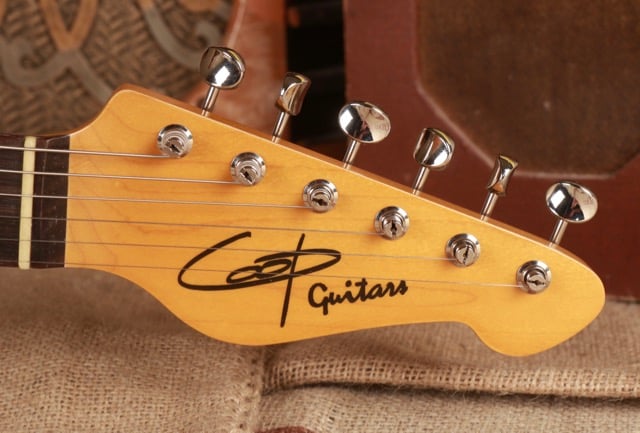
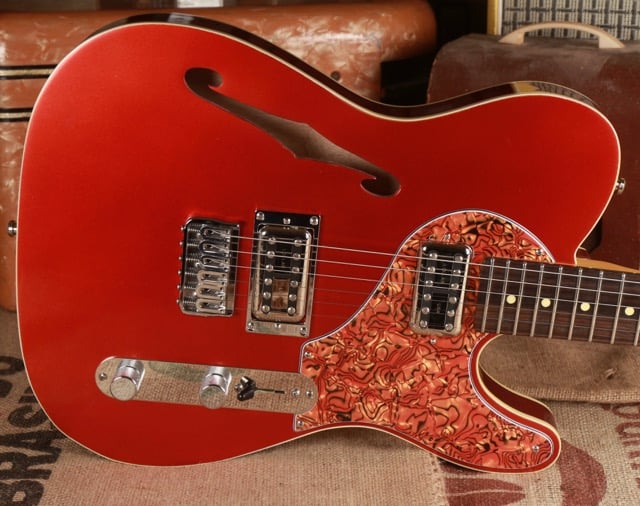
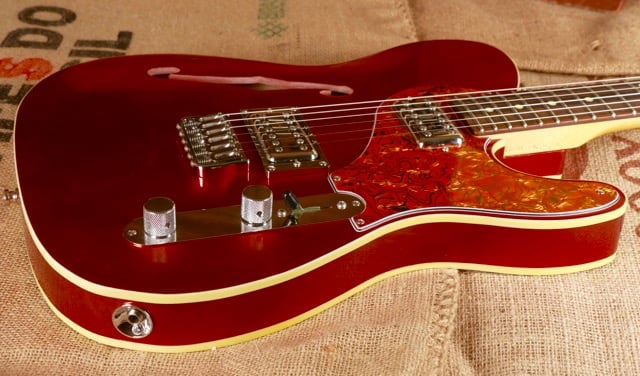
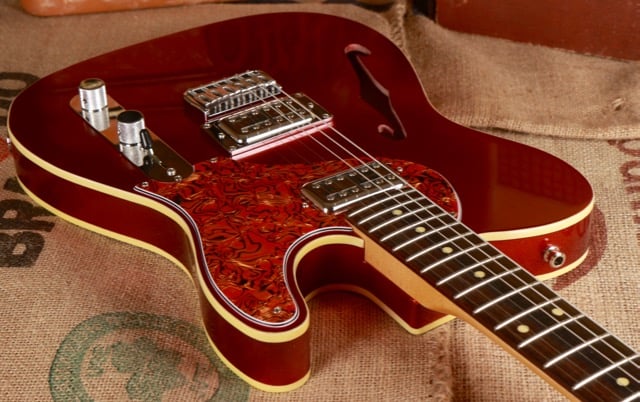 .
.